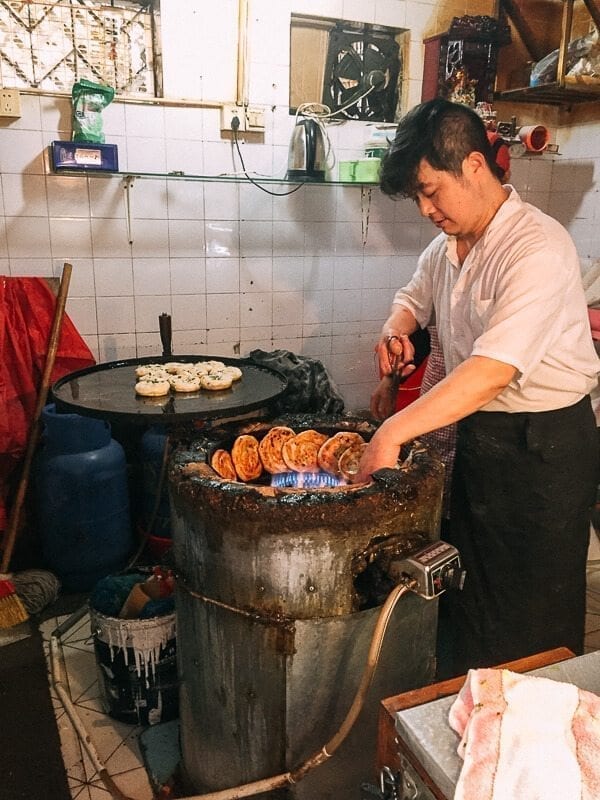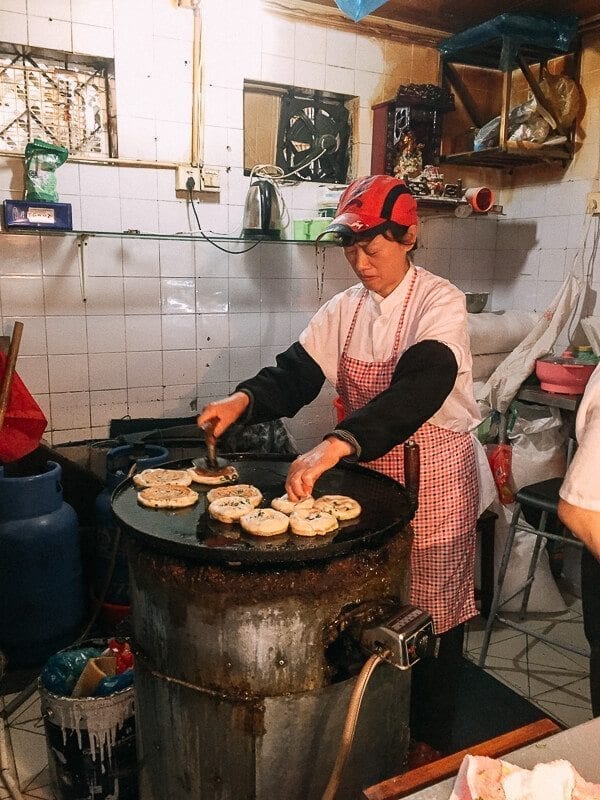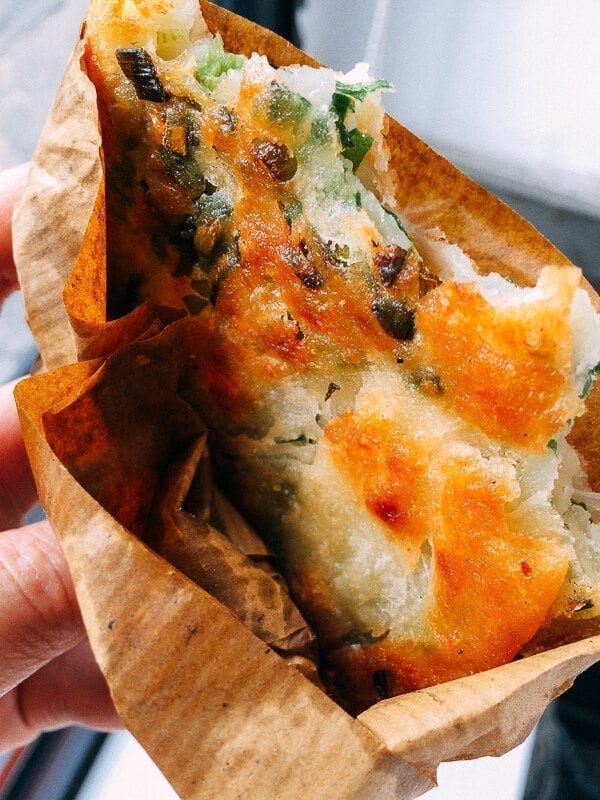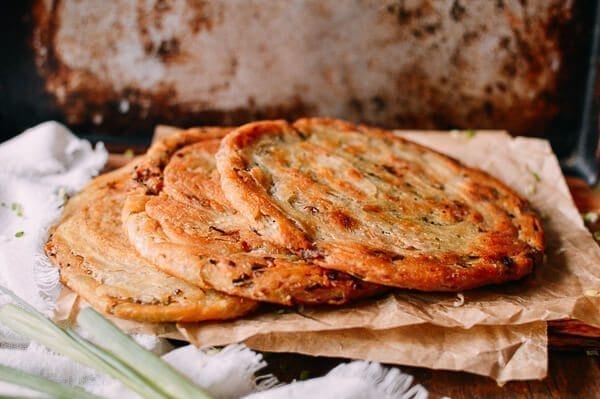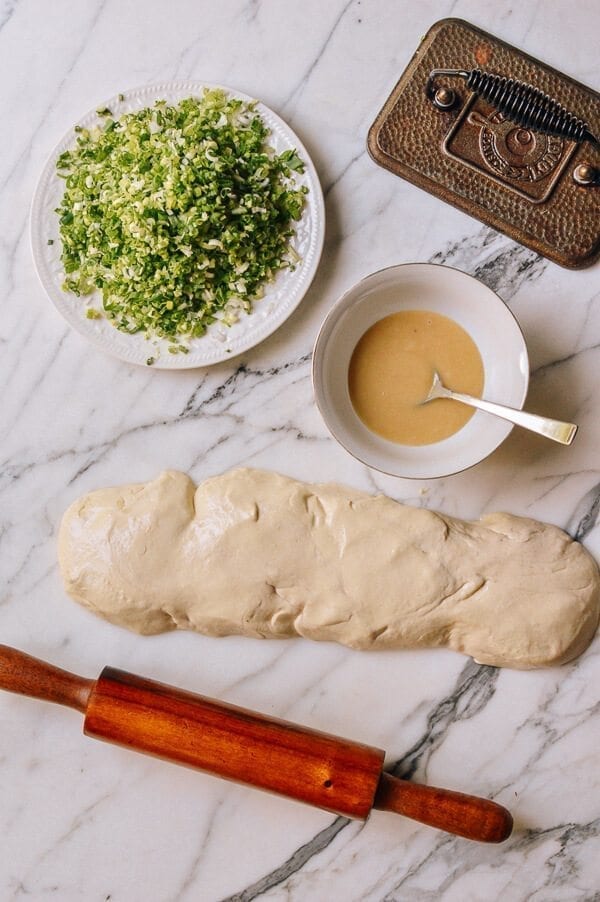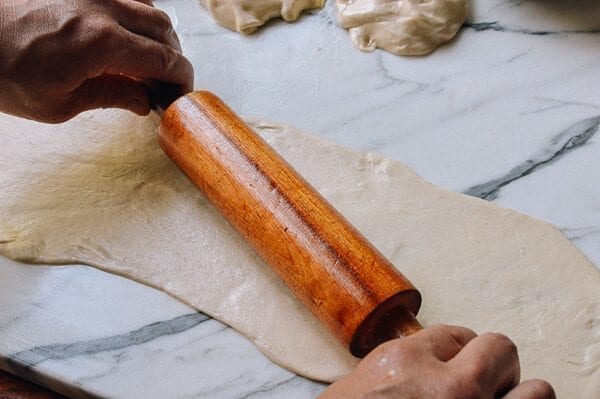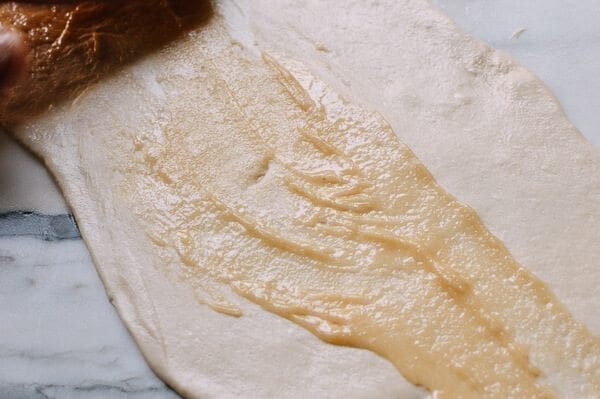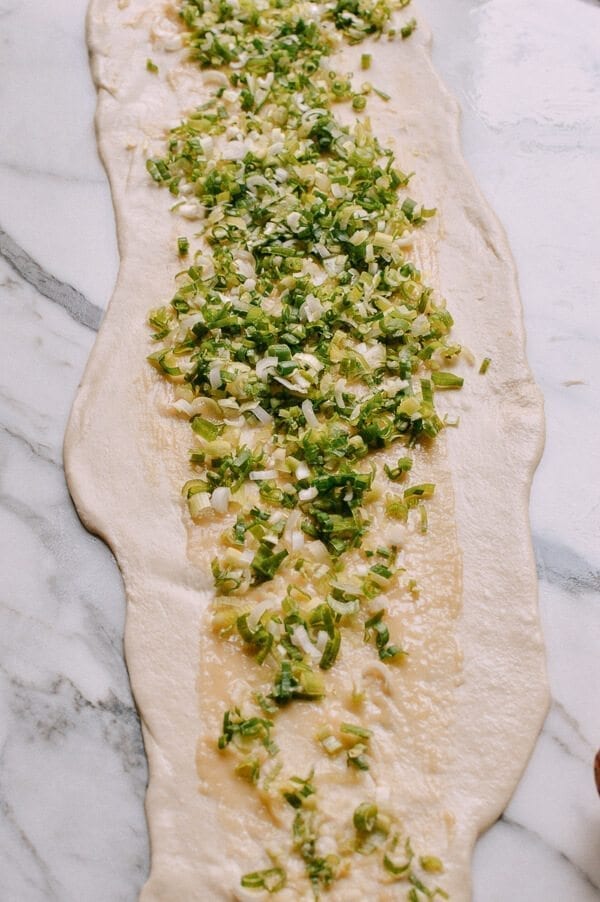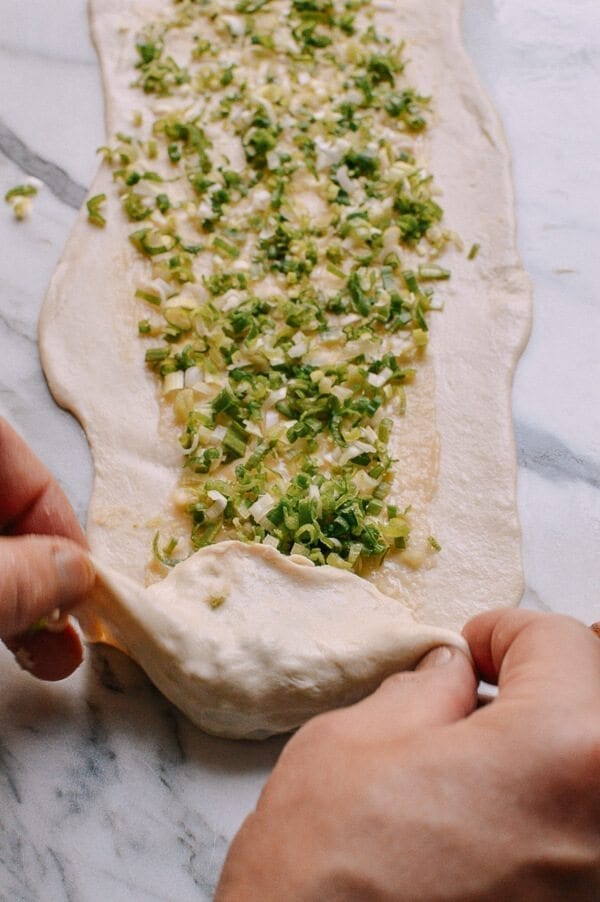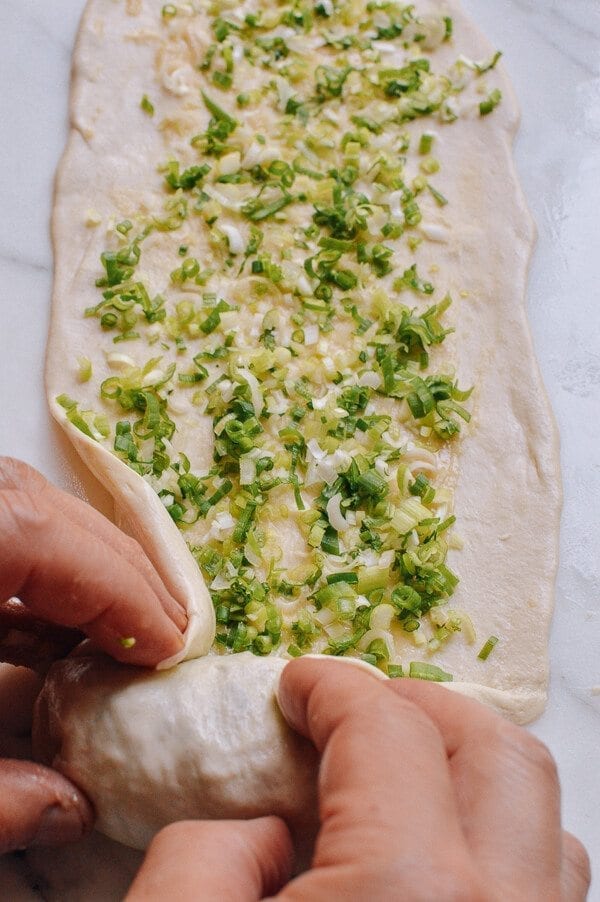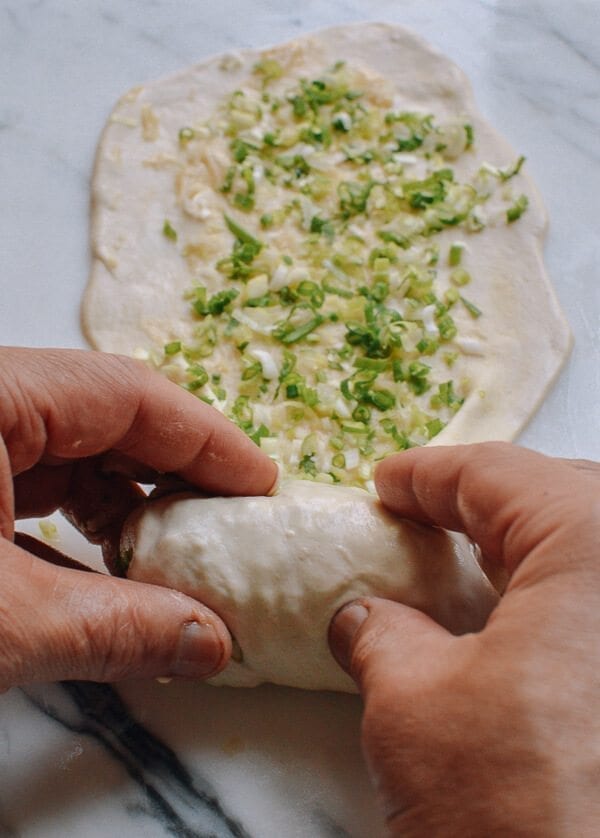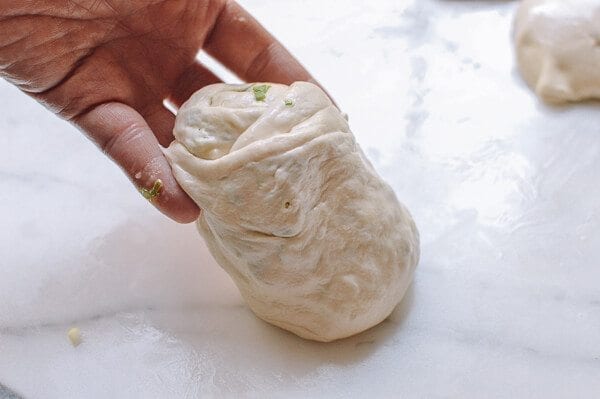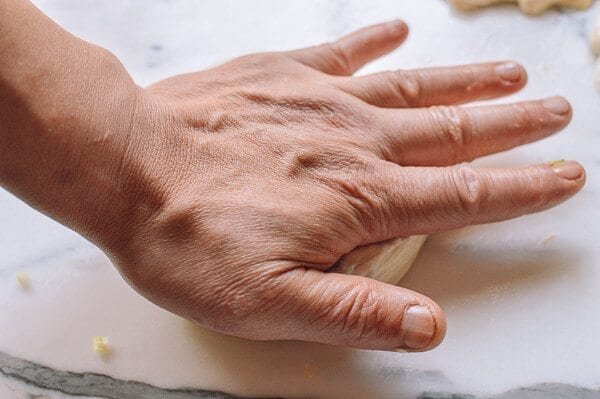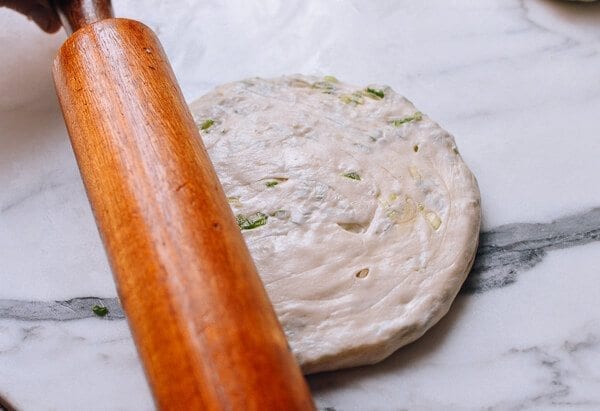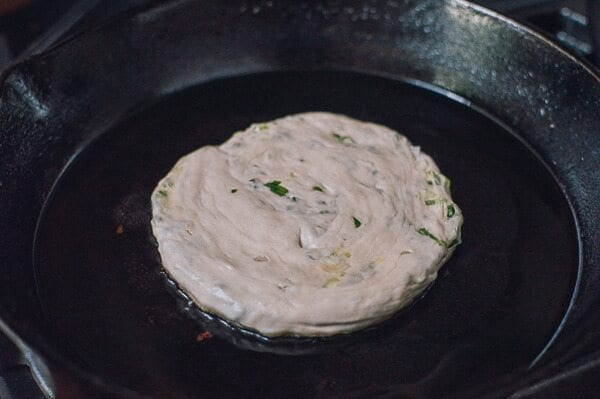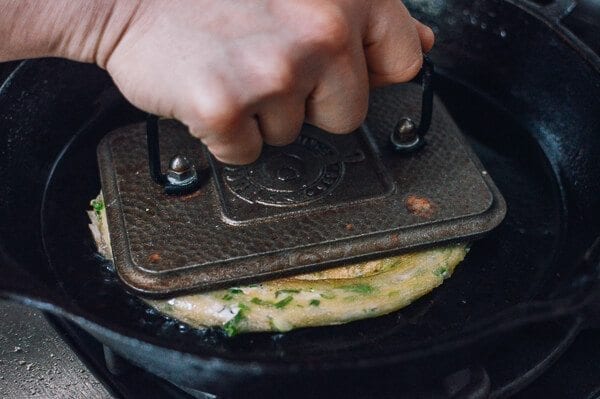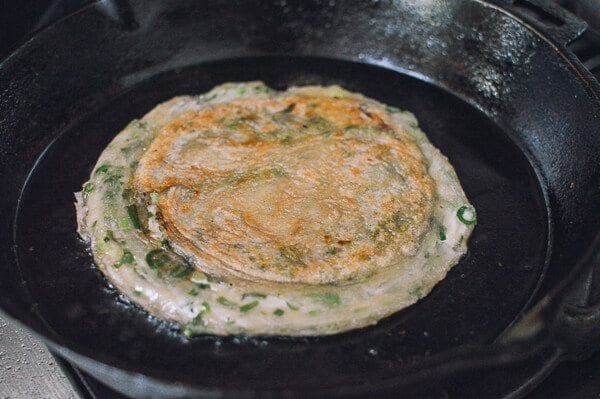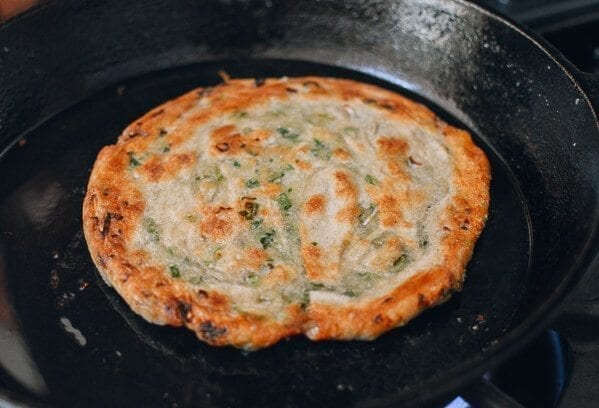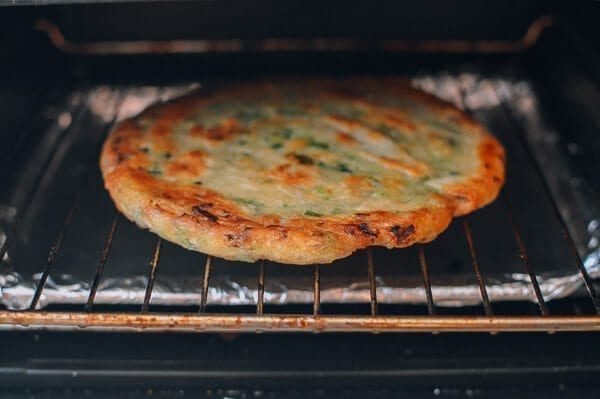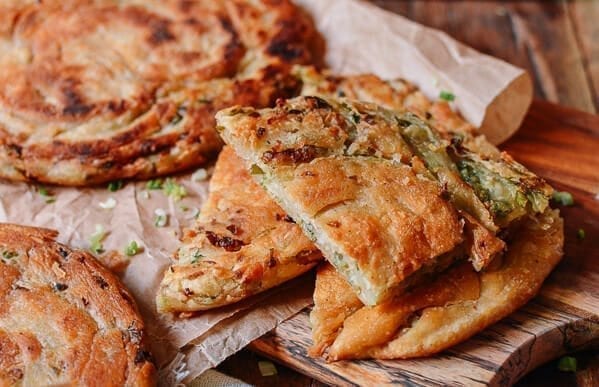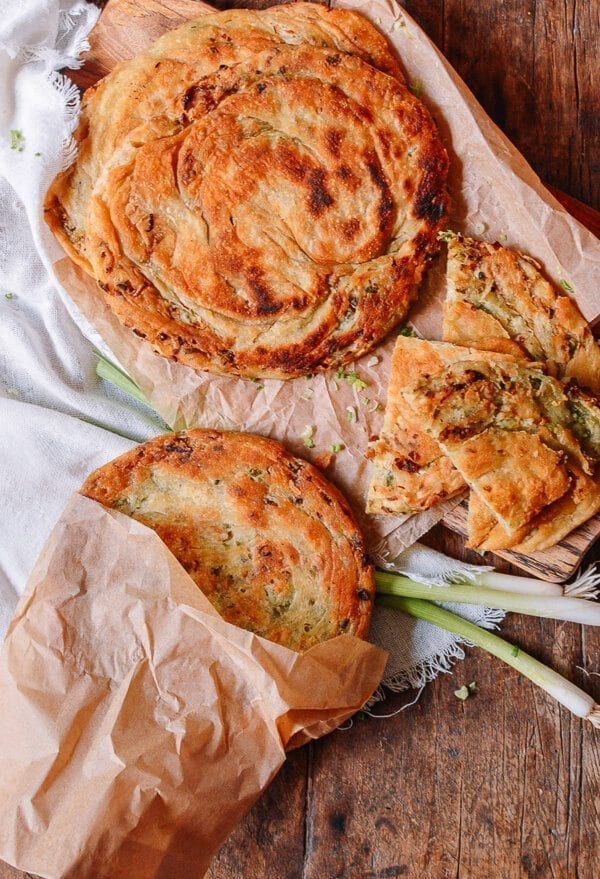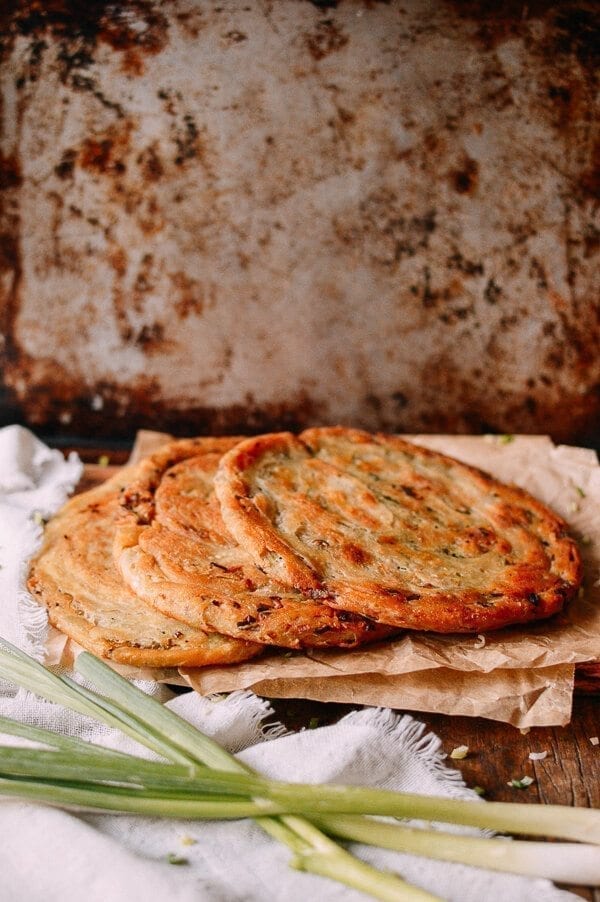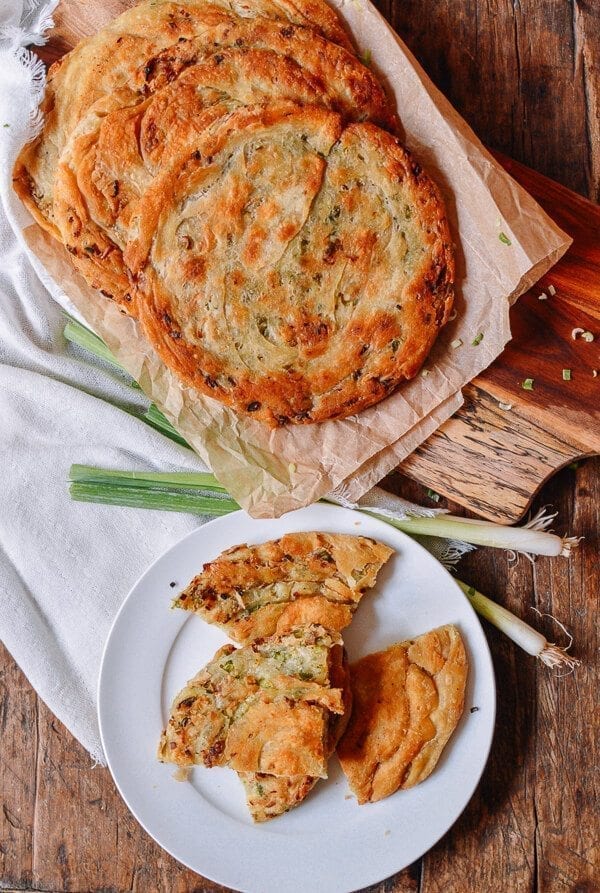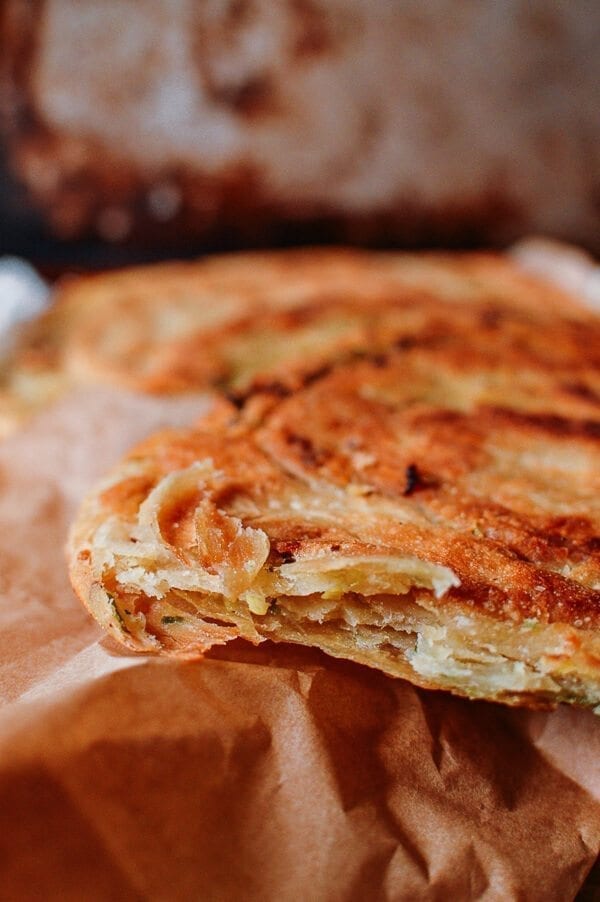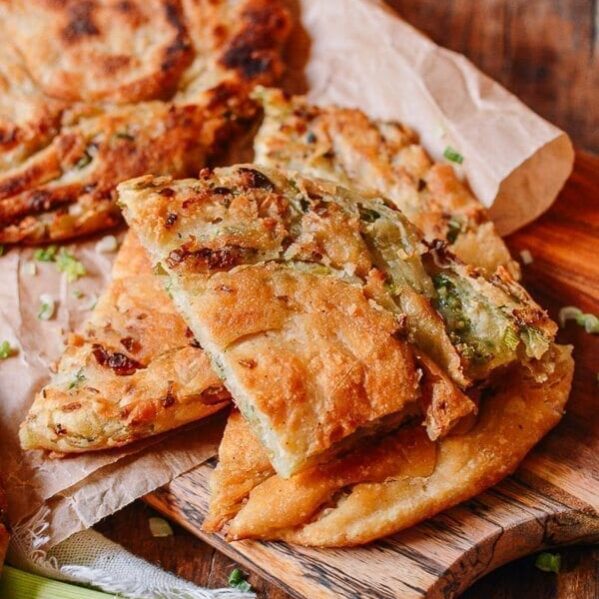How Are Shanghai Scallion Pancakes Different?
These Shanghai scallion pancakes were thicker, moister, and more jam-packed full of scallions (and pork fat) than your average scallion pancake. Just watching the vendors at work was a real treat. In fact, you kind of can’t get around watching the process, because a line wound around this particular stall every morning as locals gathered to buy the crispy breakfast treat that would start the day off right. These humble purveyors of classic Shanghai street foods are cultural treasures in China. They may not have prestige and status, but they are most definitely respected for their preservation of an old way of life and quintessential local tastes.
An Adapted Recipe for Home Cooks
Full disclosure, though, this isn’t a 100% perfect duplicate of the process witnessed in Shanghai. This may be a first, but we decided to actually omit the pork suet (i.e. pork fat) from this recipe, because it was too decadent! The Shanghai scallion pancake master at our preferred stall (we’ve got some videos of his skills below) would take a big pinch of pork fat and knead it into Every. Single. Pancake. The scallion pancakes were epically flavorful with the pork fat, but we decided to err on the “healthy” side.
We have a couple of recipes for scallion pancakes including our 9-layer version and our simple scallion pancake recipe with garlic soy dipping sauce, but after watching the masters at work in Shanghai and tasting the traditional version of the Shanghai scallion pancake, we knew a new recipe was in order. We’re especially excited about this post, because we have plenty of pictures and videos detailing how these scallion pancakes are made, so enjoy the experience through our eyes and recreate them in your kitchen at home!
Recipe Instructions
Start by preparing the dough. In a medium mixing bowl, mix 2 1/4 cups flour, ¼ teaspoon salt, and 1 cup of warm water with a wooden spoon or rubber spatula until a sticky dough forms. The dough should be sticky, but not wet. You can add up to 2 tablespoons more flour if you feel the dough is really wet, but no more than that. We all tend to make little errors in measurement sometimes, and then there is the humidity factor of your climate to consider. Here is a shot of what the dough should look like:
Next, use a teaspoon of oil to coat the top of the dough round.
Don’t worry about the dough sticking to the bowl for now. Cover with plastic wrap and let rest for 1 to 2 hours.
Now is when you might become overcome with feelings of doubt and skepticism, but this Shanghai Scallion pancake recipe requires a very soft and moist dough, unlike our 9-layer scallion pancake recipe, which is a different style of pancake! You can also see the Shanghai scallion pancake master’s dough in the picture and video below. Notice he uses oil to prevent the dough from sticking, and you can see how soft and pliable it is! We used a rolling pin, but he just uses his bare hands to flatten out the oiled dough.
In the video, you can hear Judy chatting with him, trying to get him to reveal his secrets! He is actually from Anhui province, but learned how to make Shanghai scallion pancakes from an old Shanghai master. You will also notice in the video a bowl of yellow paste (the roux) and a bowl of pork fat or “suet.” Pork fat is really king in Shanghai, whether you are making scallion pancakes, braised pork belly, or Black Sesame Tang Yuan. All of them use liberal amounts of pork fat! Going back to the recipe now, make the flour and oil roux by combining 3 tablespoons of oil, 1/3 cup of flour, and ¼ teaspoon salt. Set aside. We were told that the flour and oil paste used in the video looks yellow because of the oil used, which was especially yellow. Our mixture did not look nearly as yellow, as you can see below.
After the dough has rested, use a teaspoon or two of oil to coat your work surface. Any clean stone or wood kitchen surface will do. Take the dough out and use a little more oil if you feel the dough is sticking to your hands or work surface. Is should be soft and pliable, and the oil keeps everything from sticking together. Divide the dough into 4 equal pieces and roll each piece out lengthwise into a long strip.
Next, take about ¼ of the roux, and spread it across the entire length of the dough with your hands.
Take ½ cup of the chopped scallions, and spread them generously and evenly across the length of the dough.
You will notice that our technique is slightly different from the Shanghai master’s–he adds the scallion and pork fat together in a clump, but we decided to spread the scallions over the oil and flour paste, because we omitted the extra pork fat.
Next, roll the dough, folding and tucking in the edges every so often so you don’t have any scallions leaking out of the sides.
You can see how we do it in our pictures and also in that video. You end up with a little bundle of joy that you should set aside and cover with a piece of plastic wrap to avoid drying out. Repeat for the other three pancakes. At this point, you can also let the dough rest for 30 minutes to make rolling easier. Heat a cast iron pan over medium heat, and add 4 tablespoons of oil. Next, place the dough ball with the spiral pattern facing up on your work surface.
Flatten it with your hands or a rolling pin, so the dough round is about one inch thick.
Place it in the pan.
The pan should be hot enough so the dough is sizzling, but browning slowly. Move the dough around the oil to cook the sides of the pancake. When the bottom is slightly browned (about 2 minutes), turn the pancake over gently, being careful not to splash the oil. Use a cast iron grill press or heavy pot to flatten out the pancake to between ¼-½-inch thick, and let fry in the oil for another 2 minutes.
Turn it over if you think more browning is needed.
This is mimicking what we saw done in by the street vendors making Shanghai scallion pancakes:
Next, transfer the scallion pancake to a preheated oven at 350 degrees F, and let bake for another 5 minutes for more crisping. We used our little countertop toaster oven, which worked just fine.
Notice in the next videos the nifty setup the vendors have that were specially made for cooking Shanghai scallion pancakes. Ingenious!
Take the pancakes out of the oven and cut into wedges to serve. If you like, now’s the time to sprinkle some extra salt on top to taste.
Serve these Shanghai scallion pancakes plain, the way we like them, or with the soy dipping sauce featured in our 9-layer Scallion Pancake recipe. Enjoy!
Shanghai scallion pancakes are best eaten the same day but they can also be reheated in the toaster oven!
